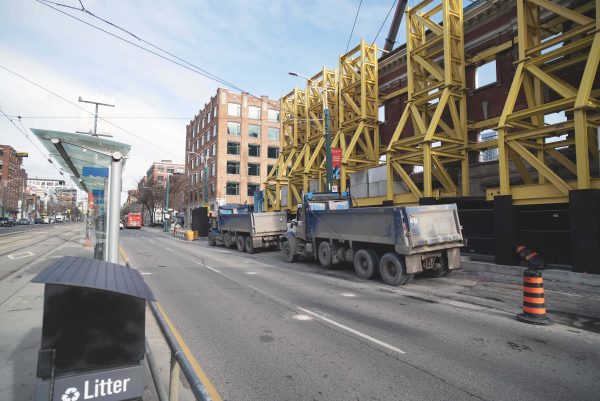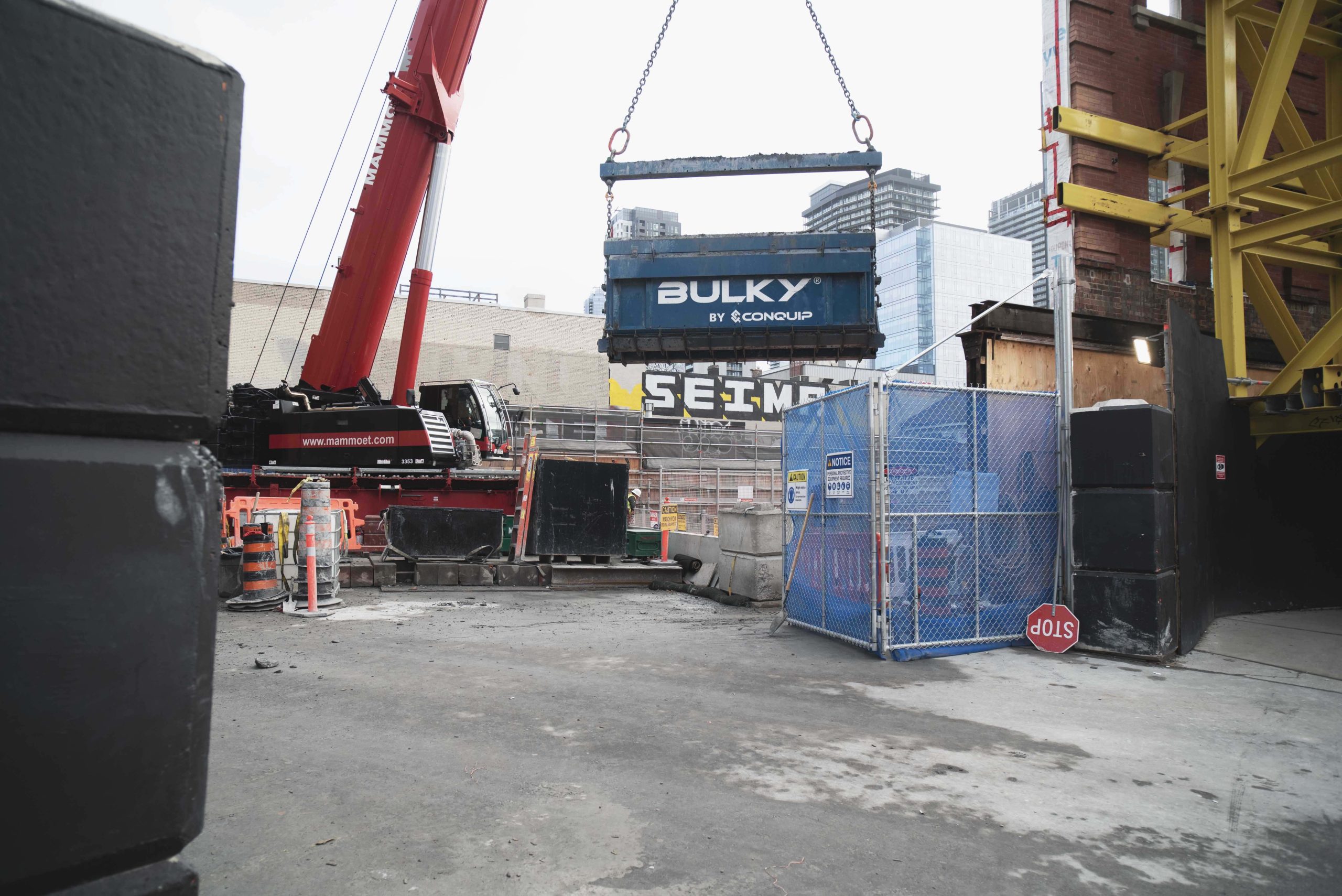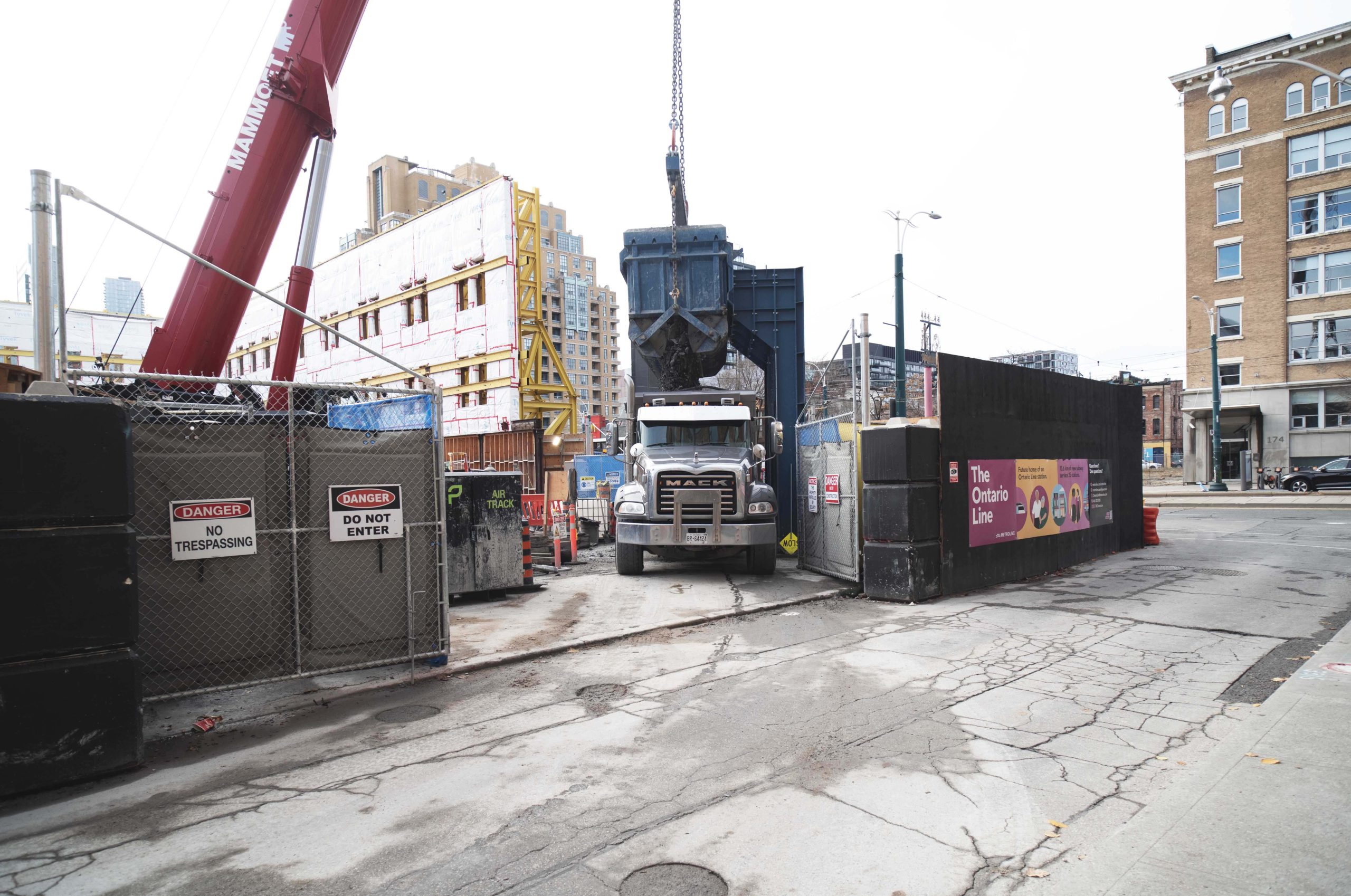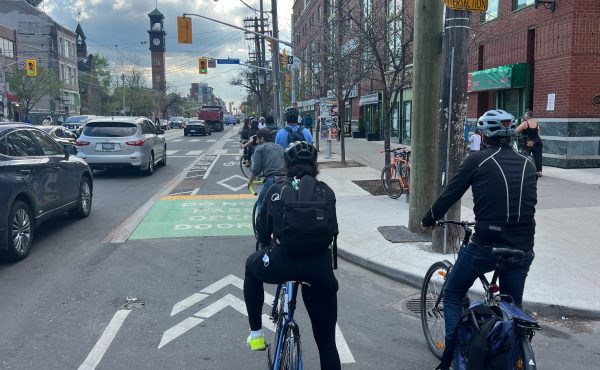A project map circulated by Metrolinx shows that the Ontario Line subway’s Queen and Spadina station will be aligned with Queen Street and centred directly beneath the 501-510 streetcar crossing. Excavation work is currently underway at what will eventually become the station entrances on the northeast and southwest corners of the intersection.
At the northeast corner, workers are sinking a foundation shaft through bedrock using a crane, a skip, and a fleet of dump trucks, as shown in the photo sequence below. Excavation for a second shaft at the southwest corner is just getting underway. A backhoe is being used for loading. Once both shafts reach a final depth of 40 metres, excavation of the bedrock for the station platform can begin.
As a local resident, I enjoy the spectacle of large forces working day and night to transform a familiar intersection. It gives me hope that for once, Metrolinx will be able to finish a project on schedule and not too far over budget.
However, the clattering sound of eight or ten diesel trucks idling for extended periods on Spadina Avenue and nearby Cameron Street signals the danger of unnecessary toxic emissions over the duration of the Ontario Line project.
At these two sites, it would seem that Metrolinx, a government appointed agency, can’t be bothered to reduce avoidable emissions by enforcing the City of Toronto’s idling control bylaw, which only allows one minute of engine idling per hour. If they are not doing so at this prominent downtown location, one might well ask whether they are currently enforcing it at any of their other construction sites.
When the City’s idling bylaw was updated in 2010, then Medical Officer of Health, Dr. David McKeown noted that diesel exhaust was of particular concern because it contains many substances that have been designated as toxic chemicals. And of course, burning diesel fuel emits carbon dioxide. According to The Atmospheric Fund, carbon emissions in the Greater Toronto and Hamilton region increased by 4.7% in 2023.
It’s easy to understand why dump truck drivers, most of them small contractors working by the hour, are inclined to leave their engines running at all times. Though it wastes fuel, keeping the engine turning signals a willingness to resume work at any moment, even if the schedule of work involves a lot of waiting, as it does at the Queen and Spadina worksites. As for keeping warm, the Metrolinx sites do have heated offices where truck drivers on long layovers can warm up.
The City of Toronto doesn’t have nearly enough inspectors to enforce compliance with its idling bylaw at every construction site. Metrolinx would need to cooperate with the City’s education efforts, post signage at worksites and involve its on-site traffic manager in enforcement.
Unfortunately, it would seem that Mayor Olivia Chow and my own Ward 10 Councillor, Ausma Malik, are not interested in engaging with Metrolinx on this matter. In recent emails, I urged them to take immediate action. I received an acknowledgement from Malik, but no further response, let alone action.
While Metrolinx has not revealed how much excavated material this sprawling project is estimated to produce, past experience can give us an idea. According to historian Jay Young, between 1949 and 1966 contractors excavated 3 million cubic yards of material to build the first 15 miles of Toronto’s rapid transit system. The Ontario Line will be about 10 miles in length. We can be sure that that every last cubic metre of that material will be hauled away in the bed of a dump truck. The sheer number of truckloads involved is what makes the potential for harmful emissions from idling diesel engines a serious matter.







One comment
Thank you for bringing this discouraging situation to our attention Peter. It is actually a bit perplexing as to why this bylaw was introduced in the first place since it seems to be rarely enforced and regularly flouted. If only the city was more serious about tackling the sources of avoidable pollution in the city instead of making increasingly performative gestures.